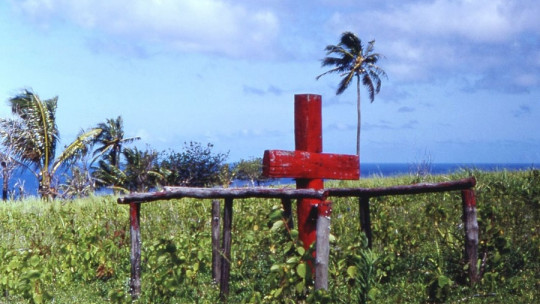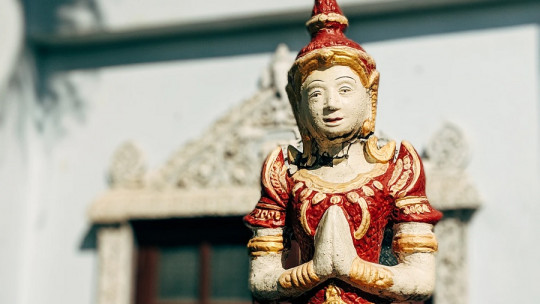
Throughout history, human beings have constantly asked themselves the why and how of their own existence, their past and future, their conditions and whether it is possible to improve them or even the meaning of life itself or reality. And among the different ways through which an attempt has been made to answer these questions, we can find that of faith: religion.
There are many confessions and cultures that have emerged, lived and in many cases disappeared. Although currently a majority of the population tends to believe in one of the five most prevalent religions (Christianity, Islam, Judaism, Hinduism or Buddhism), the truth is that there is still a great variety of religious beliefs beyond these options. .
These include a very minority few that have emerged from the contrast between disparate cultures and technological levels, as is the case with cargo cults It is about this type of cults that we are going to talk about throughout this article.
What are cargo cults?
The cargo or cargo cults are a set of spiritual and religious cults or beliefs present mainly in the islands of Oceania (and generally specific to Melanesia), specifically in those populated by indigenous people with limited contact with the rest of the world and limited technological development.
It is a series of religious confessions that, despite being heterogeneous and different from each other in many aspects, share the fact of being based on the first contacts between natives and explorers, soldiers, travelers and shipwrecked people from much more developed territories. at a technological level (generally European, American or Japanese) and the set of possessions that came with their shipments.
Generally in this type of beliefs The shipments themselves are considered to be goods sent by the gods or spirits to facilitate their existence, and the foreigners who arrive with them are seen as deities or sent by them in order to provide them with them. This contact is not always positive, since in some cases the non-distribution of cargo and goods or the unequal distribution are taken as a grievance or an act of greed and disobedience on the part of those who should deliver them, and sometimes they have reached form insurrections.
The vehicles in which they arrived also receive a certain veneration, something that in the end makes a lot of logic: the arrival of food dropped by parachute from airplanes could mean a big change for the local population, who watched in wonder as the food was delivered to them from the sky by flying objects or entities whose nature was difficult for them to understand. In this sense, most cargo cults present rituals and customs such as the making of replicas of satellite dishes and airplanes, in order to attract their arrival by imitating the actions of the Europeans, Americans and Asians with whom they had contact.
It is important to keep in mind that although the hope and belief in the future arrival of shipments may suggest that they maintain an attitude of apathy and inactivity (and in some cases a focus on the arrival of shipments can be observed) in reality many of these towns They are tremendously active, and they must be in order to survive. Cargo cults They have also led to the incorporation of numerous rituals and customs adopted from the observation of Europeans in the hope that its replication will allow the arrival of new goods.
Where do these types of beliefs come from?
As we have indicated, the majority of these beliefs have their origin in the first contacts between the inhabitants of a relatively isolated tribe or culture and the arrival to their territory of European or Asian explorers, soldiers or shipwrecked people (especially relevant were the contacts and the shipments that arrived at the time of World War II). In many cases, previous cultures highly valued the role of ancestors and their spirits, and sometimes the arrival of outsiders was taken as a symbol or their return.
But these foreigners also carried possessions that did not exist and were unknown to the natives: they came in large wooden or metal ships, or (in later cases) in airplanes that they saw and heard flying over their territory, and they carried food, tools or weapons that they had never seen. and that they were more efficient or useful than those they previously had. Thus, and especially When the native population began to exchange or receive these goods, they identified them as a divine gift or gift and they began to worship the cargoes that were so useful.
Likewise, the emergence of cargo cults allowed them to explain the role and existence of other beings that until then were nonexistent for them, by seeking integrate foreigners into your explanation of the world without generating dissonance with pre-existing beliefs Even the presence of an engine noise can be interpreted as a sign that spirits are making an appearance.
Furthermore, similar to what initially happened in South and Central America when the Europeans arrived on their shores, on more than one occasion the newcomers themselves began to see benefit in these beliefs and even encouraged them to obtain different types of advantages or to that the native population did not revolt. This caused the cults of cargo or cargo to be strengthened, although with the passage of time some of the people with this type of beliefs understood the use and inequality of foreigners when it came to sharing their goods and have ended up distrusting them. .
Two examples of cargo cults
As we have previously indicated, There is no single cargo cult, but it is possible to find a wide diversity of peoples and beliefs who are part of this type of cult. Below we can see some examples of this.
Tanna Island: The Cult of John Frum
On this Melanesian island we can find several different cargo cults. One of the best known is the cult of John Frum, who was considered the king of America.
Probably an American aviator (it is speculated that the name comes from “John from America”) who arrived during World War II, This figure, which is represented dressed in a military uniform, is considered a divinity who once came to the island with great gifts, but after a time and having predicted the departure of the white man from the island, he left it promising to return. The widespread belief is that one day he will, emerging from the Yasur volcano, loaded with new goods.
Even today, the inhabitants of the island carry out different rituals, even marching with sticks that resemble rifles and the American flag every February 15, waiting for the return of their god.
Madang and the cult of missionaries
Another of the best-known cargo cults is the one present in Madang, on the north coast of Papua New Guinea In this case, the inhabitants of the region, seeing that the practices and beliefs of Western missionaries provided them with more developed instruments and skills (in addition to receiving different shipments), began to seek to learn Christian ideas and beliefs to try to discover what their secret was. .
However, in their quest to acquire and learn Western Christian beliefs, the locals acquired a different interpretation by mixing them with their quest for cargo or cargo: They considered that the figure of Christ provided the inhabitants of Europe with the cargo but nevertheless the missionaries themselves wanted to keep it for themselves.
Later, World War II would come, in which they would be invaded by the Japanese. Since they expelled the missionaries and in turn the latter were seen as obstacles or oppressors, they were initially well received although the plundering that this army carried out ended up making the native settlers stop valuing and being interested in contact with foreigners. , even after the withdrawal of the latter.








